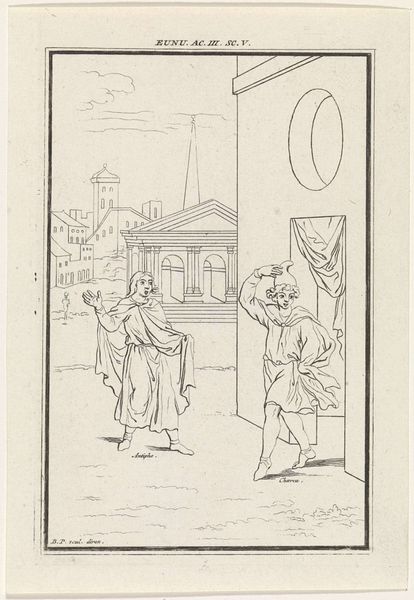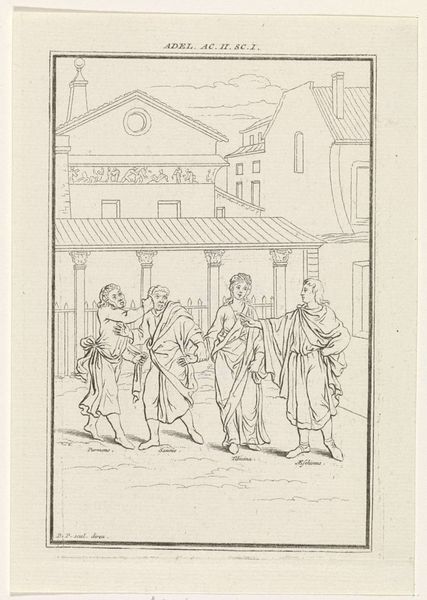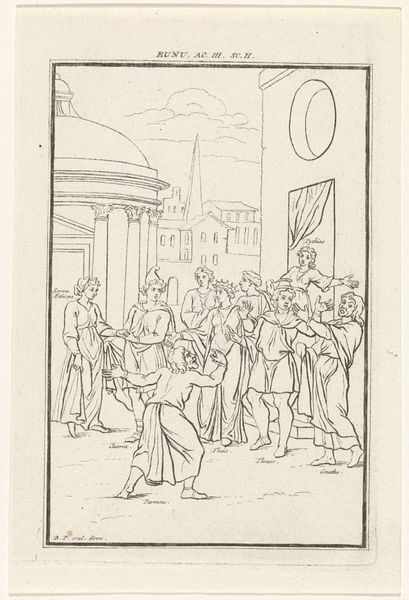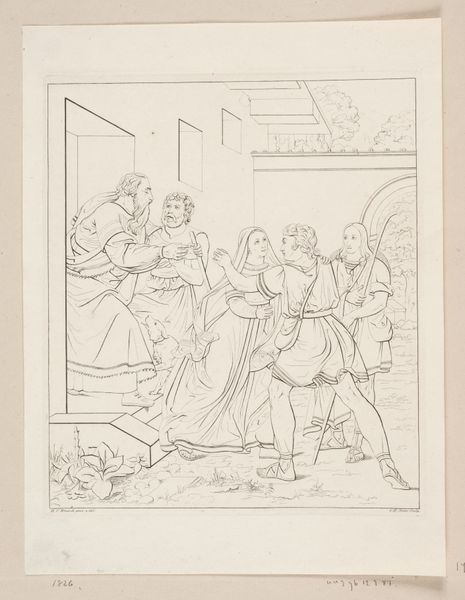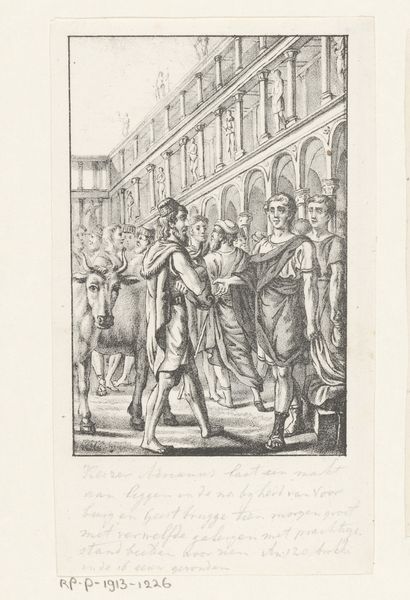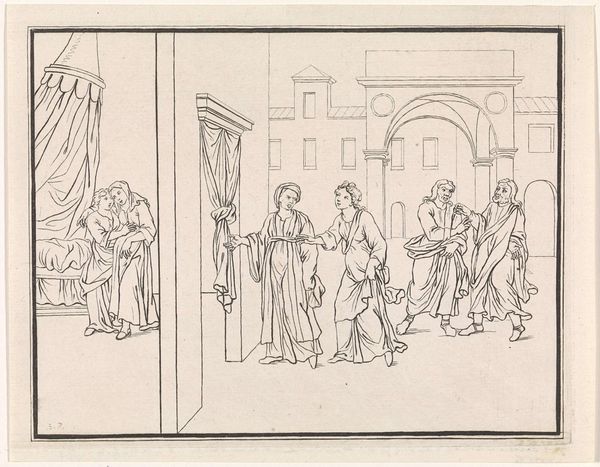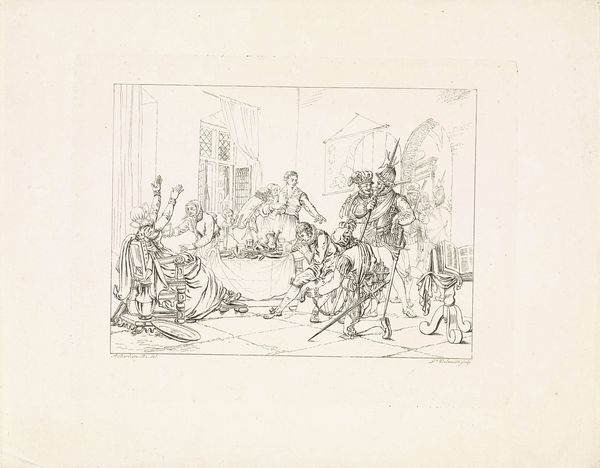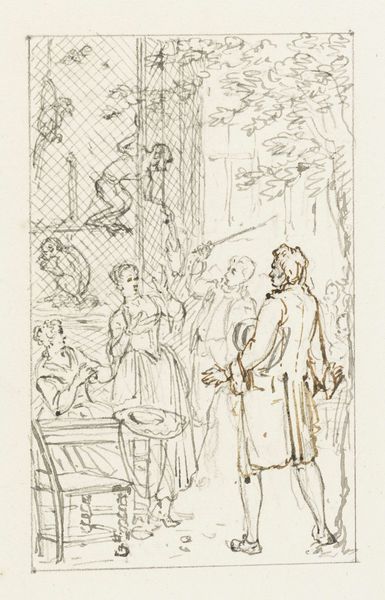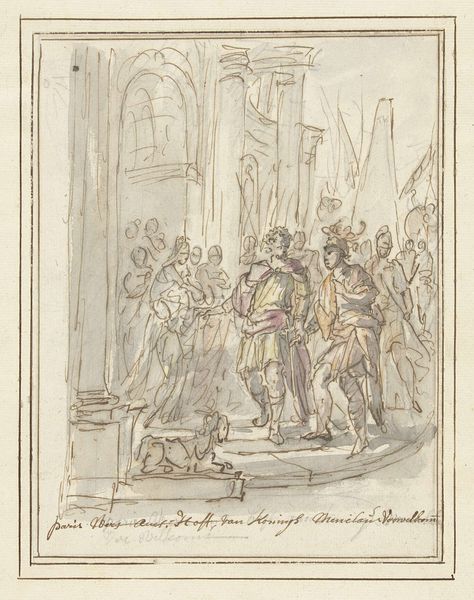
drawing, print, pen, engraving
#
drawing
#
narrative-art
#
baroque
# print
#
figuration
#
line
#
pen
#
genre-painting
#
engraving
Dimensions: height 142 mm, width 101 mm
Copyright: Rijks Museum: Open Domain
Curator: This drawing, titled "Scène uit de komedie Andria van Terentius", or "Scene from the comedy Andria by Terentius" in English, was created between 1716 and 1718 by Bernard Picart. It’s currently held at the Rijksmuseum. Editor: My immediate response is to the linework. It’s so spare, so economic, but creates a whole world. There’s a tension between the very clean lines and the chaotic scene unfolding. Curator: Picart used pen and engraving to capture this moment from Terentius' play. The narrative being presented offers us a slice of Roman life. The figures embody archetypes—the irate father, the bumbling servants—and these types resonate across cultures and time periods, embodying anxieties around family, class, and social mobility. Editor: Yes, the line really is everything here, directing the eye. Note the architectural structure, the precise arrangement of figures in a kind of rising diagonal from left to right... it almost theatrical in its staging. It guides your gaze, a meticulous construction that leads you from the stern patriarch to the gaggle of servants bursting from the doorway. Curator: Exactly! And that very theatricality is part of its cultural function. Theatre, throughout history, serves as a mirror. By watching these archetypes clash, the original viewers could laugh at and reflect on their own societies, acknowledging anxieties and conflicts present even today. These archetypes – the miser, the romantic lead – tap into an understanding of humanity that seems almost instinctive. Editor: There's an elegance in how little Picart uses to convey so much narrative, right? The barest of cross-hatching creates form and shadow. It almost reminds me of the clarity found in certain ancient Greek vase paintings. There's no room for error, and that discipline is impressive. Curator: Indeed. Beyond just craftsmanship, I find compelling that the work showcases enduring social rituals through this easily reproduced print, which allowed it to circulate and perpetuate the performance of morality within homes. Editor: Thinking about this piece technically, the relationship between positive and negative space—the balance that Picart strikes is extraordinary. This lean, understated execution speaks to the artist's masterful handling of the form. Curator: It shows us that stories, and the human dramas within them, never really fade away. They take on new costumes, new settings, but the heart remains recognizable. Editor: And in Picart’s rendition, this slice of life attains a formal sophistication far exceeding its literal elements.
Comments
No comments
Be the first to comment and join the conversation on the ultimate creative platform.
